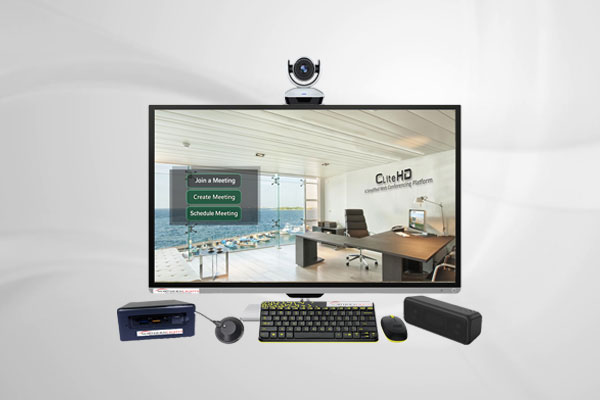The input of technological progress can be felt in every field. But it’s most significant contribution has been to the field of communication. The article intends to showcase the birth and growth of video conferencing in part due to the advancement in science.
What is Video Conferencing?
A meeting conducted in real-time via concurrent transmission of data in both video and audio format to discuss a common topic with two or more people attending it, usually from separate locations, is a video conference.
For example, a live video uploaded on YouTube is not a video conference as the stream provides only one-way transmission of audio-video data – from the uploader to the viewers, and not the simultaneous data transfer that is associated with video conferencing.
But consider this. An office in Italy conducts a meeting with a group of participants in Britain and another based in Hungary. Can this be considered a video conference? Assuming that it is conducted in real-time, with the application of AV signals? Yes.
History of video conferencing:
The concept of video conferencing was first conceived in the late 1870s. However, its development took fifty years to bring this premature concept to life. In the year 1927, AT&T Bell Laboratories working alongside the Scottish engineer John Logie Baird created the first known system for video conferencing.
Further growth of video conferencing was a result of the computer revolution in the 1980s. There was widespread use of computer systems during this period. Furthermore, the inception of video codecs collaborated with the rise of broadband services such as ISDN. This enabled not only higher processing of video formats but also higher speeds capable of transmitting these frames.
The webcam thought first conceptualized in 1991 entered production in 1994 by the name of QuickCam at the cost of $100, capitalizing on the then popular video conferencing internet client CU-SeeMe.
Types of Video Conferencing:
Video Conferencing can be categorized into four parts on the basis of cost
1. Web Camera Video Conferencing
Web cameras are a component that can be utilized for the purpose of video streaming and communicating through a microphone. These either come built-in into computer systems, specifically laptops or are bought as stand-alone equipment to compliment pre-built computer systems.
The quality of this class of video conferencing is dependent upon the types of cameras used. Though more often than not, priority is only given to webcam video conferencing for its practicality. It also acts as a cheap workaround for conducting conferences, a contrast to the full-fledged pricier alternative categories below.
Although it is one of the cheaper forms of video conferencing, it is more common, not only because most companies seek to spend money on improving other aspects of business rather than on improving the quality of video conferences held, but also because it is the most portable medium of video conferencing available.
2. Videophone Video Conferencing
Telephones having, in addition to the staple number-pad and voice receiver, an extension of built-in cameras for recording and a screen for displaying the caller are videophones. These take up less space at the expense of higher purchasing costs.
3. Videoconference systems
Computer systems built solely for the purpose of video conferencing are termed videoconference systems. These systems provide higher cost as high bandwidth multipoint control units need to be setup.
This class of video conferencing systems, however, emphasizes on quality and is present in multi-national companies where video conferencing takes place on a regular basis.
4. Telepresence Systems
A recently developed, higher version of the above-stated videoconference systems, a telepresence system undoubtedly yields the ultimate experience in video conferencing as said systems establish entire rooms designed for the sole purpose of transmitting high volumes of audio-video data, to create a paramount video conference experience.
Pros of Video Conferencing:
1. Video conferencing can save costs.
By using systems that send and receive audio-video signals via a cloud-based service or a network, video conferencing saves expenses not only in the long run but also by cutting down on travel expenses incurred by the employees.
Even when taking into account telepresence systems, which are expensive to setup, gradual use of video conferencing using these can reduce the yearly costs of travelling for every joint venture to other corporations for every individual.
2. Video conferencing is time conserving.
The need for executives to plan out their entire schedule ahead of time just to attend a meeting in another state or country is eliminated because of video conferencing.
3. No need for travel.
Exhaustion and jet lag is prevented upon using video conferencing facilities rather than full-fledged travel to different locations. Neither differences in time zone have to be taken into account, nor do visas created for employees to initiate travel to other countries.
Cons of video conferencing:
1. Time Zones have to be considered in video conferences.
Different time-zones can be a hassle when video conferencing correspondents from different countries. This can inhibit interaction or cause inefficient business practices among the participants as one side has to sacrifice.
2. Bandwidth rates and processing power differences can cause lag.
Unlike meeting up with prospective clients in real life, bandwidth disturbances can ruin what could have been a great interaction between the parties. Video conferencing usually occurs due to time or distance restrictions. As such, a low data transfer rate can affect the meeting, making it impossible in some worst case scenarios.
3. In video conferencing details are masked.
The quality of the conference is directly proportional to many instruments utilized in the video conference. Most notably to the camera and microphone and also the display and speakers used. In addition, frequent lagging can result in skipped frames, causing inconvenience to both involved.
And though video conferencing has its own benefits, certain aspects of video conferencing have been ignored. The personal nature of face to face business negotiation has been impaired by using video conferencing. As such repeated usage of these devices to suit more than sacrifice can cost companies their goodwill.

